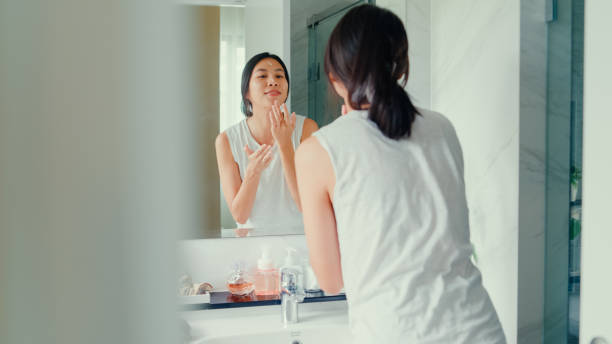Skincare Basics for Teenagers
Because you are changing so rapidly as a teenager, your skin too is changing in many ways. Knowledge of skincare basics for teenagers is mandatory for both achieving and keeping great skin today and in the future. Here are all the important facts that can help you create an effective skincare routine during these transitional years.

Why is skincare important to teens?
Skincare Basics for Teenagers are far from being just a skincare regime but are parts of a healthy human body lifestyle. Teenagers are indeed grown-ups, but their hormonal changes may result in different skin problems; therefore, it is an ideal time to start taking proper care of the skin.
Understanding Your Skin Type
It also has to be remembered that the first step to following Skincare Basics for Teenagers is determining your skin type. Here are the main categories:
- Normal
- Oily
- Dry
- Combination
- Sensitive
Determining your skin type is crucial to knowing which products you should use and what routines are correct for your skincare essentials when you’re a teenager.
Essential Steps in Skincare Basics for Teenagers
Cleansing: The Foundation of Skincare
Sanitization is one of the most important skincare basics for teenagers. It washes off the debris and oil produced during the day and any other form of grime that may be on the skin. To shower your face, choose a mild, non-soap cleanser that does not thirsty your skin or remove the skin’s natural moisture.
Toning: Balancing Act
Toner is not very necessary for all teenagers, but it can prove to be useful for many of them. Toners are typically used to level the skin’s acid mantle and wash off the remains of the cleanser. There is usually formal alcohol in most drinks, so try to avoid these to prevent your skin from drying out.
Moisturizing: Hydration is Key
This is the myth about oily skin: everybody thinks that it doesn’t need any moisturizers, but this is not true. Probably the most important factor of Skincare Basics for Teenagers is hydration. Select an ample, oil-free skin lotion that will not clog the pores of the skin with a tendency to cause acne breakouts.
Sun Protection: Your Skin’s Best Friend
Some of the stars include drinking water, exercise, and a balanced diet; however, one can note that the first and primary skincare basic for teenagers is protection from the sun. The UV radiation is received and is known to cause early aging and skin cancer risks. Do not forget to use sunscreen of not less than 30 broad spectrums daily regardless of the weather.
Learn about the several skin problems most teenagers face and how they can treat them.
Acne: The Teenage Nemesis
One thing people tend to worry about the most when it comes to skincare basics for teenagers is acne. Here are some tips to manage breakouts:
- Open your face, but do not overwash.
- Non-acnеogenic skin care products should be utilized.
- Do not make frequent contact with your face.
- There is a possibility of using products containing salicylic acid or benzoyl peroxide.
Oily Skin: Shine Control
If you’re dealing with excess oil, try these Skincare Basics for Teenagers with Oily Skin:
- Use oil-free products.
- Try clay masks once a week.
- Don’t skip moisturizer.
- Blotting papers should be used for resizing at midmorning or midafternoon.
Dry Skin: Hydration Station
For those with dry skin, focus on these skincare basics for teenagers:
- The facial wash should be creamy and, more so, skin-hydrating.
- Moisturizing is best done when the skin is wet, so after the shower, pat yourself dry and then rub the cream all over your body.
- A humidifier used in your room might be helpful.
- Do not take hot water rubs, as this removes the natural oils from the skin.
Perspectives on Healthy and Sustainable Living
Skincare Basics for Teenagers go beyond just products. Believe it or not, your diet and other aspects of your life have much to do with your skin’s condition. Here are some tips:
- Another tip is to drink lots of water.
- As he strives to make the best meal, the patient should consider taking a balanced diet with more fruits and vegetables.
- Get enough sleep.
- Stress should also be controlled through exercise or by the use of other non-pharmacological methods.
So How Do You Get Started?
That is why, now that you’ve got the Skincare Basics for Teenagers, it is time to start constructing the routine. Start with the essentials:

Morning:
- Cleanse
- Moisturize
- Apply sunscreen.
Evening:
- Cleanse
- Perform treatments (if necessary).
- Moisturize
As you get used to these Skincare Basics for Teenagers, you can also include other phases like the toning or the use of some specific treatment.
When to See a Dermatologist
Often knowing skincare basics for teenagers is required, but occasionally that involves professional help. Consider seeing a dermatologist if:
- Your acne is severe, or you use other products that don’t help clear up your skin.
- These skin conditions are chronic, and they do not get better with simple remedies.
- You detect any changes in abnormality in the texture of your skin.
Conclusion:
They remind you that Skincare Basics for Teenagers are not just about getting flawless, succulent skin. I think that it has been created for people to learn how to build confidence and maintain their health starting from points of school age. These changes are going to differ for everyone, as everyone’s skin is different, so take time and look for what may be just right for you. You have the tools for a lifetime of stunning, flawless skin here today with the proper Skincare Basics for Teenagers; your skin simply has to receive it.
FAQs
How many eras should a teenager wash his face?
Based on Skincare Basics for Teenagers, face washing is usually encouraged to be complete twice a day, when one is done in the morning and the other at night before going to bed. But if you have sweated profusely or worn full-blown makeup, then you may require an additional wash.
Some multitudinous natural-based skincare products claim to be better for teenage skin.
Natural is always good but not better. When it comes to skincare, the most important thing is the decision to buy products appropriate to the skin type and problems that are natural or not. It’s always recommended to patch-test new products and seek a dermatologist if one is in doubt.
